Some people have an ambiguous attitude towards these primates. And in vain, because monkeys are dexterous, smart, and cute. And we, the crowns of creation, should definitely learn from some of them about maintaining order in the family and strengthening family ties. 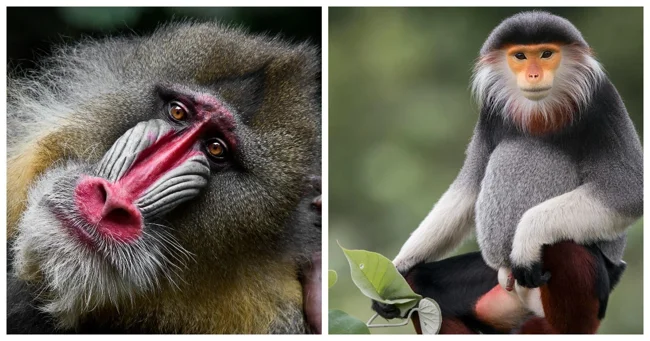
Plus, among these mammals there are such unusual animals that one cannot immediately classify them as monkeys.
In the arms of spleen 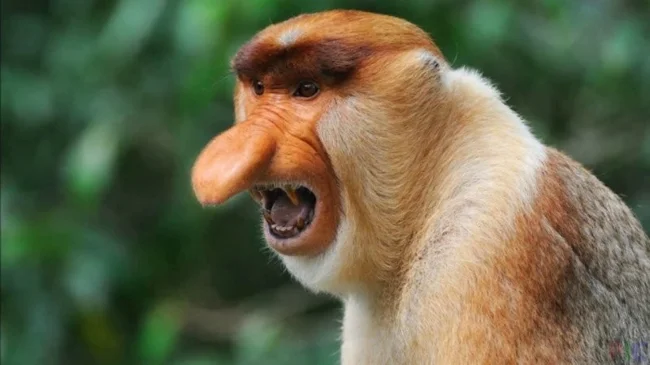
The name of these unusual creatures living in the jungles of Borneo is completely justified. The proboscis monkey has a prominent central part of its muzzle, which, together with its elongated face and half-closed eyes, gives it a sad appearance.
Monkeys prefer to settle closer to bodies of water, live in trees and minimize their stay on land due to the threat of attack by predators. Unfortunately, proboscis monkeys are in danger of extinction. And the reason for this is not natural predators, but human activity.
Leatherface 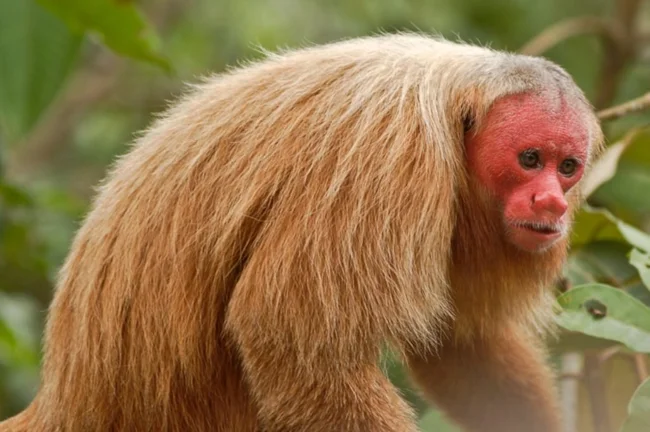
Bald uakari live in the Amazon tropics. The climate in this area is specific - humid, which is associated with a considerable number of different diseases. Therefore, the aukari wear their bright red face with pride. After all, this is an indicator of health. If a monkey gets sick, for example, with malaria, its face will turn pale. And it’s better to stay away from such a fellow tribesman.
Slow reproduction and, again, human intervention in the natural environment have not yet provoked the transition to the category of endangered, but have already made aukari vulnerable.
Golden-furred miracle 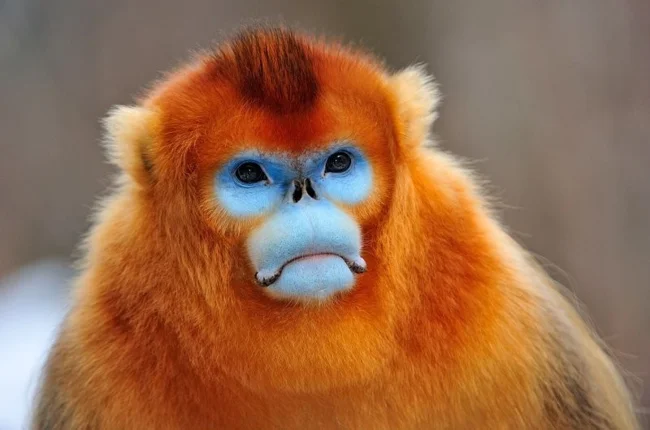
Roxella's rhinopithecus is named after the concubine and then wife of the Ottoman Sultan Suleiman Roxelana. She had bright golden hair. Blue-faced monkeys live in Asia, mainly in China, Myanmar and Vietnam, and their golden coats keep them warm in cold weather.
For Rhinopithecus, fur is literally a communication tool. They comb each other's fur, doing it with great care. The technique, as well as the beauty of wool, will be the envy of any modern fashionista.
The animal is listed in the Red Book. The total population size does not exceed 5 thousand individuals. Therefore, zoologists try not to interfere unnecessarily in the lives of golden monkeys.
Brave at Heart 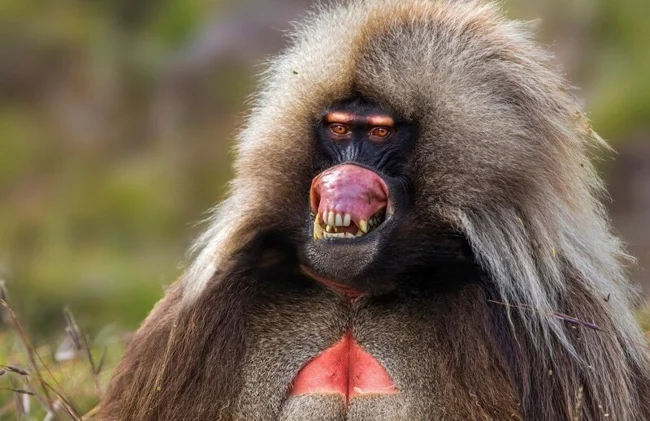
Geladas are a rare species of primate from the monkey family. They live on the mountain plateaus of Ethiopia. The highlight of the monkeys is the furless patch of skin on the chest that is bright red. If you don’t really find fault, you can see the heart in it.
It is believed that the largest, intensely colored bleeding hearts are those of alpha males - strong, agile, powerful. They fight like lions with their enemies, protecting their rather large (up to 1200 individuals) family.
But, in general, geladas are peaceful. And they are the only primates that eat exclusively plant foods. After all, their brothers do not mind eating an insect, eating bird eggs or feasting on a lizard. And the geladas are strict ascetics in this regard and do not allow themselves too much.
Mystical alien 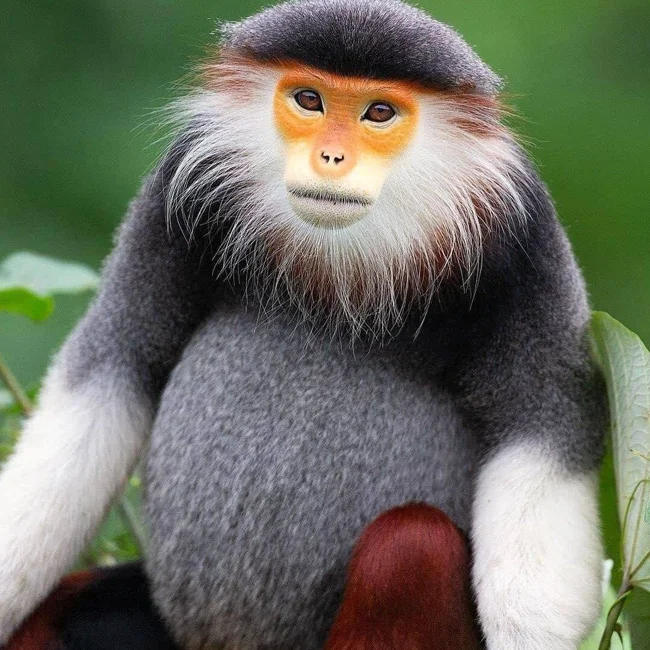
The Nemean thinboll is another representative of the marmosets and lives in Southeast Asia, mainly in Laos, Vietnam and Cambodia. These creatures with an alien appearance - peach-colored muzzle, slanted eyes and a spider-web-like beard - spend most of their lives in the trees in search of food.
Due to deforestation, populations of slender bodies have declined sharply. And now the species is considered endangered.
Jungle Spirit 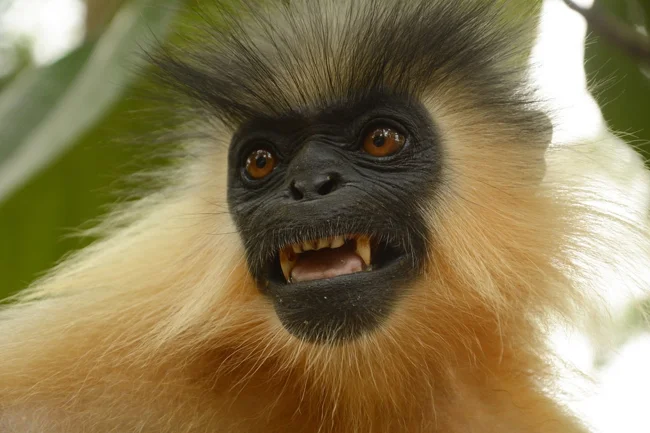
The golden langur, endemic to Borneo, lives up to its nickname. Indeed, in the gaze of this representative of the monkeys the wisdom of many generations froze. And the black expressive muzzle gives the appearance a mystical note.
Langurs are active creatures, but they prefer mainly plant foods. Because of this, most of their lives are spent searching for and eating it in order to fill the energy deficit.
The attractiveness of multicolor 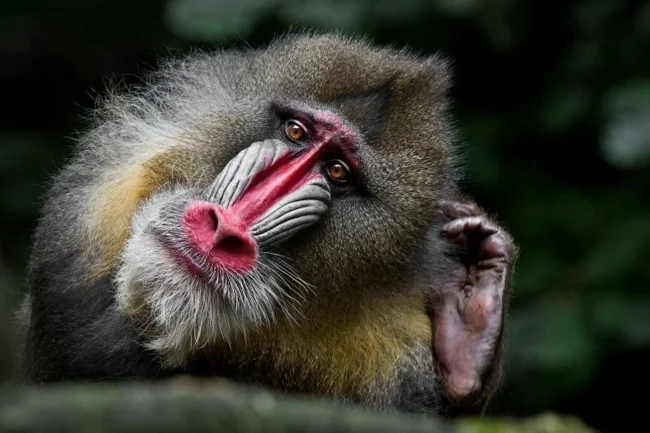
Mandrill is one of the largest and brightest monkeys. What is noteworthy is that in moments of strong emotional upheaval, the color intensity increases.
These walking palettes live in the tropics of Africa, they walk on the ground most of the day in search of food, and at night they climb trees. Despite their impressive fangs, the bulk of a mandrill's diet consists of plant matter. Monkeys live in medium groups of up to fifty individuals, each of which is led by a bright alpha. Unfortunately, like their other jungle cousins, mandrills are listed as vulnerable in the Red Book.
0 comments
